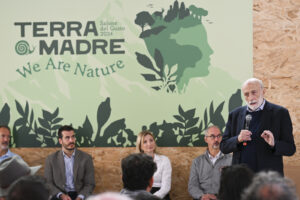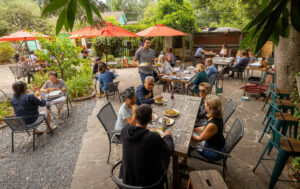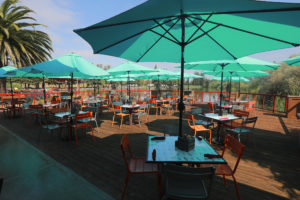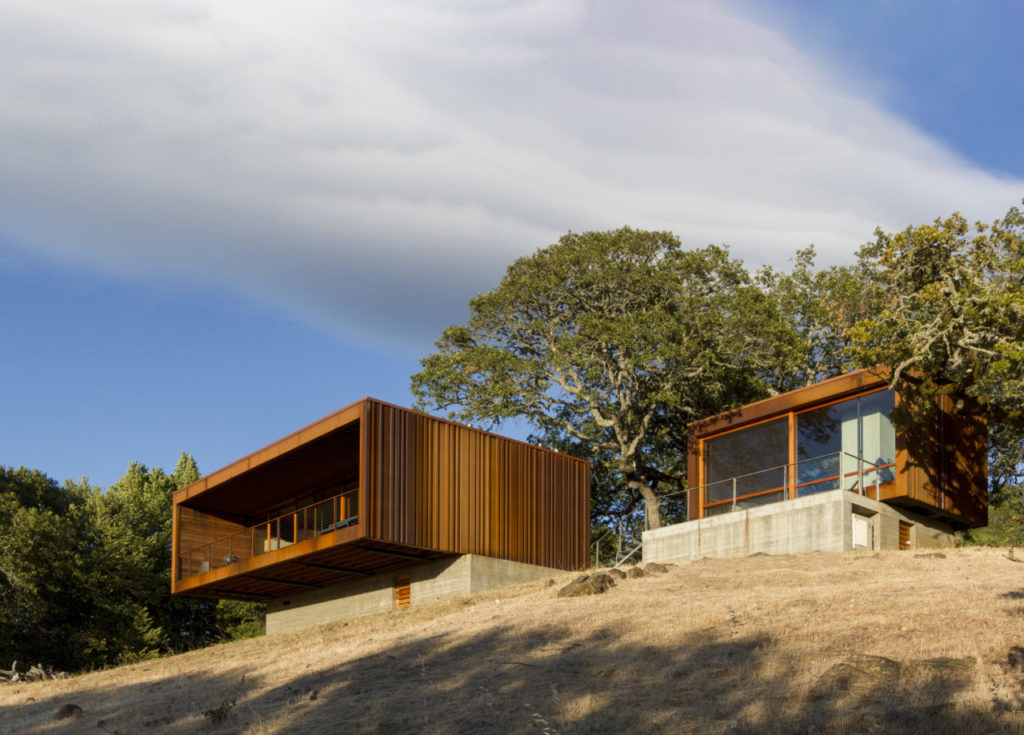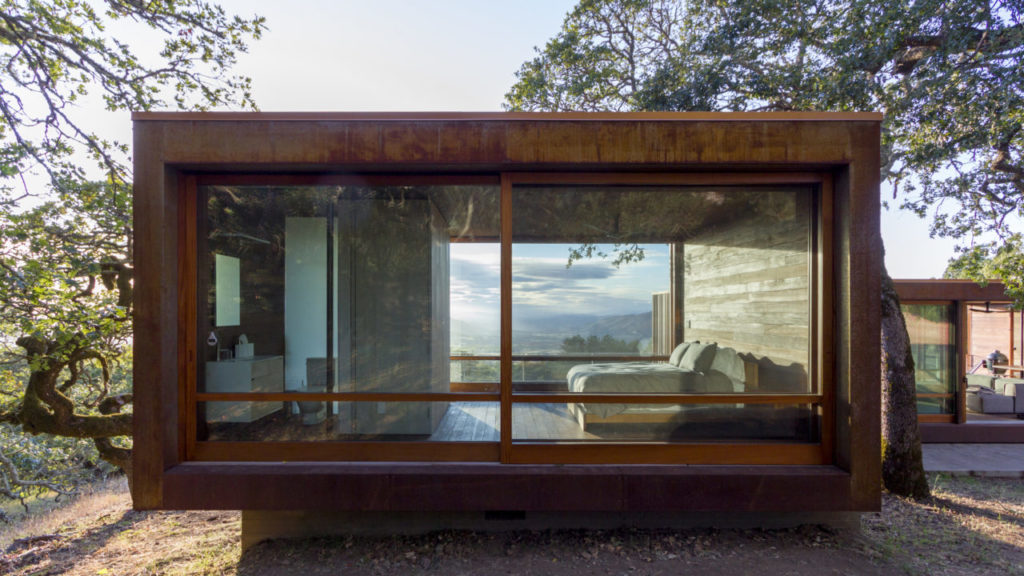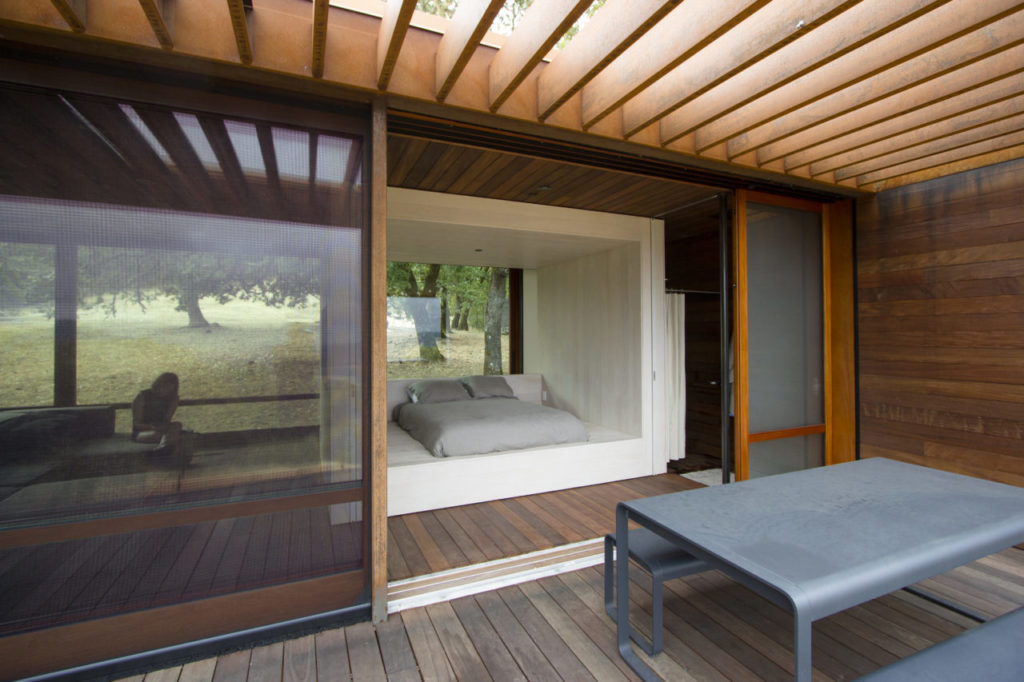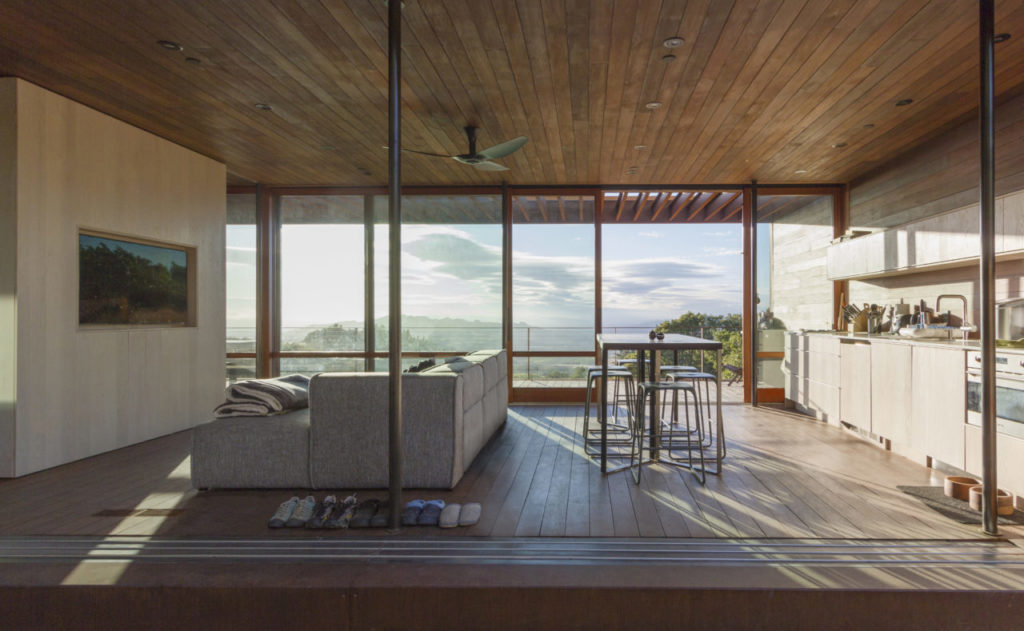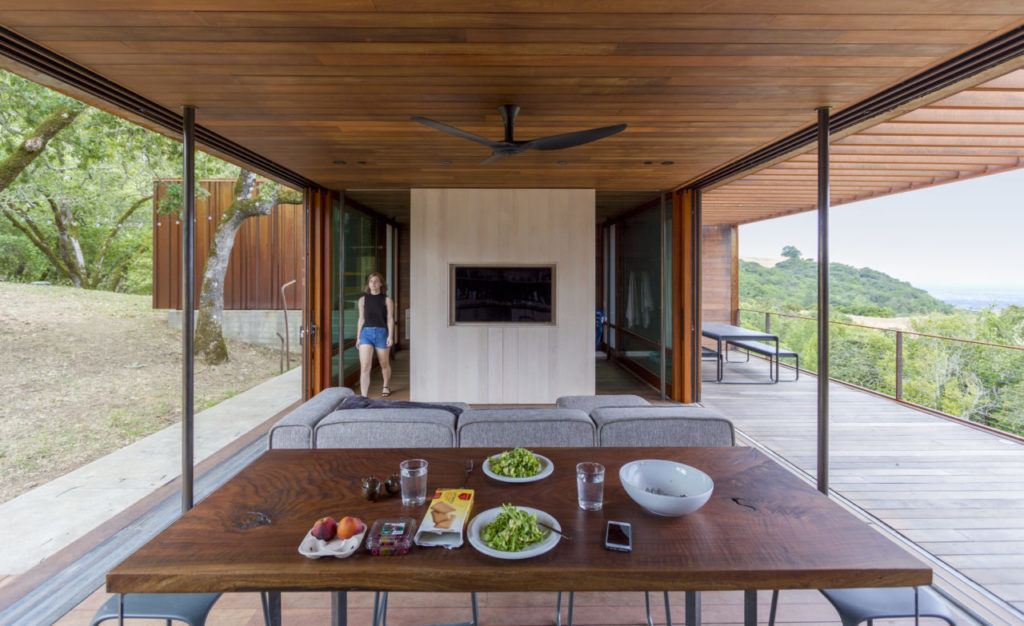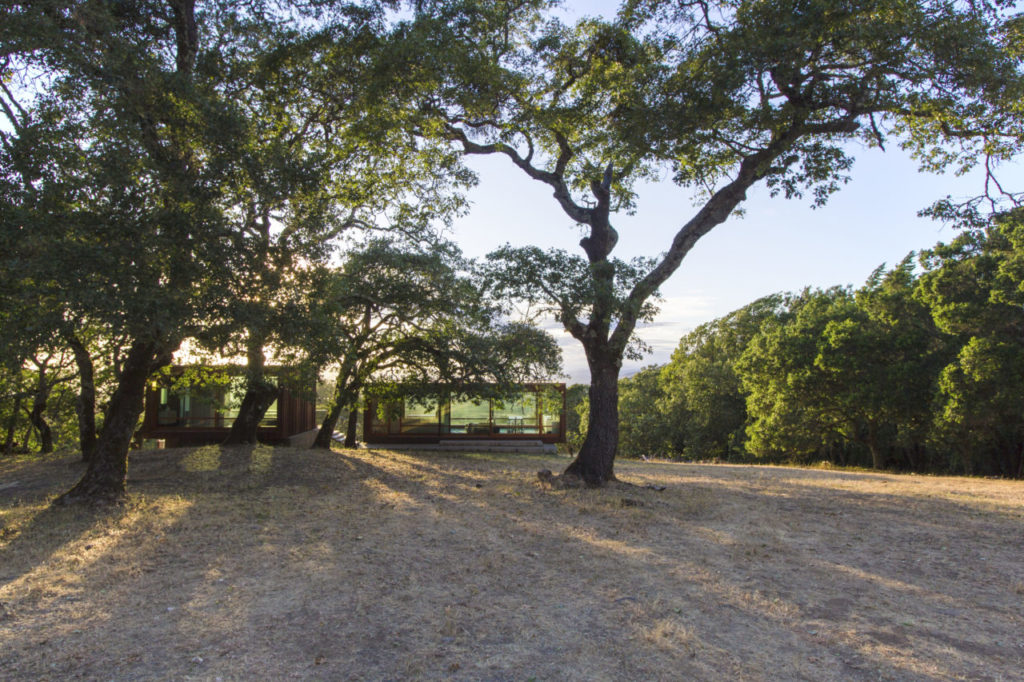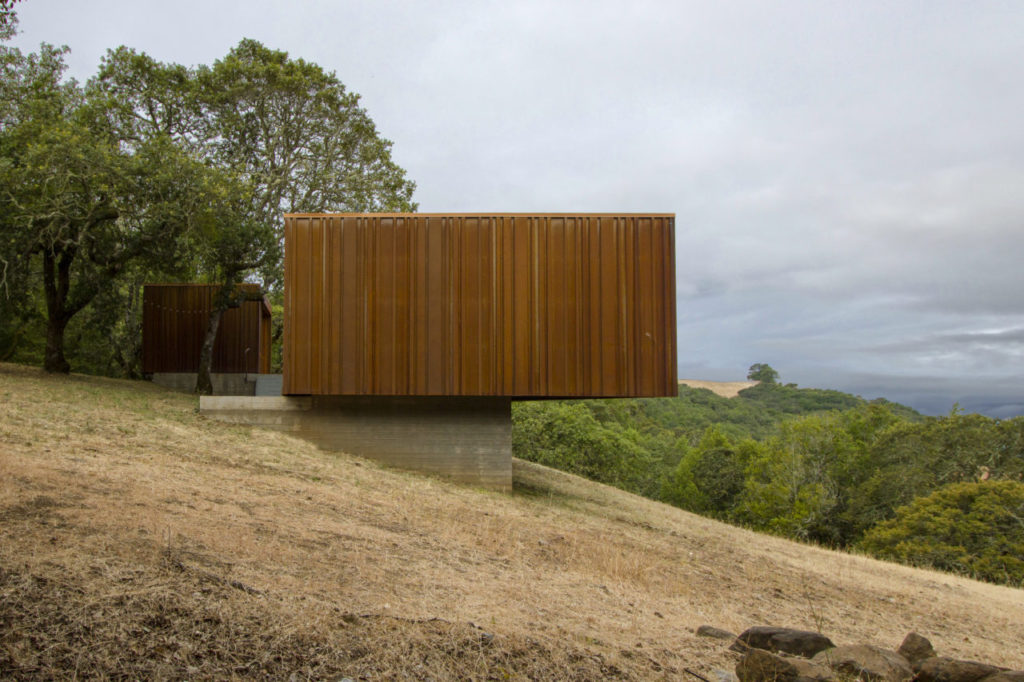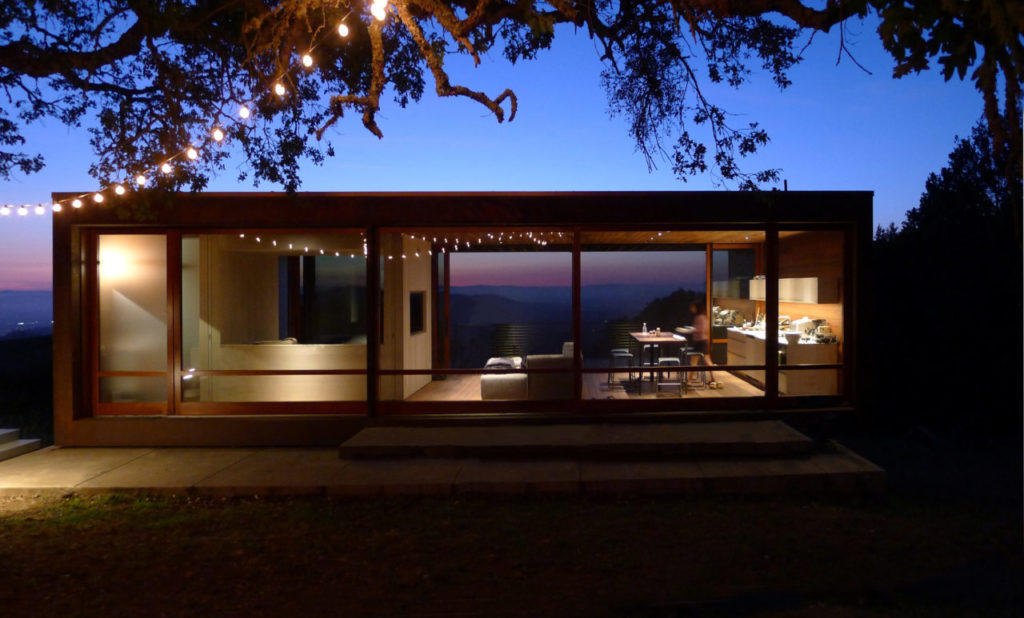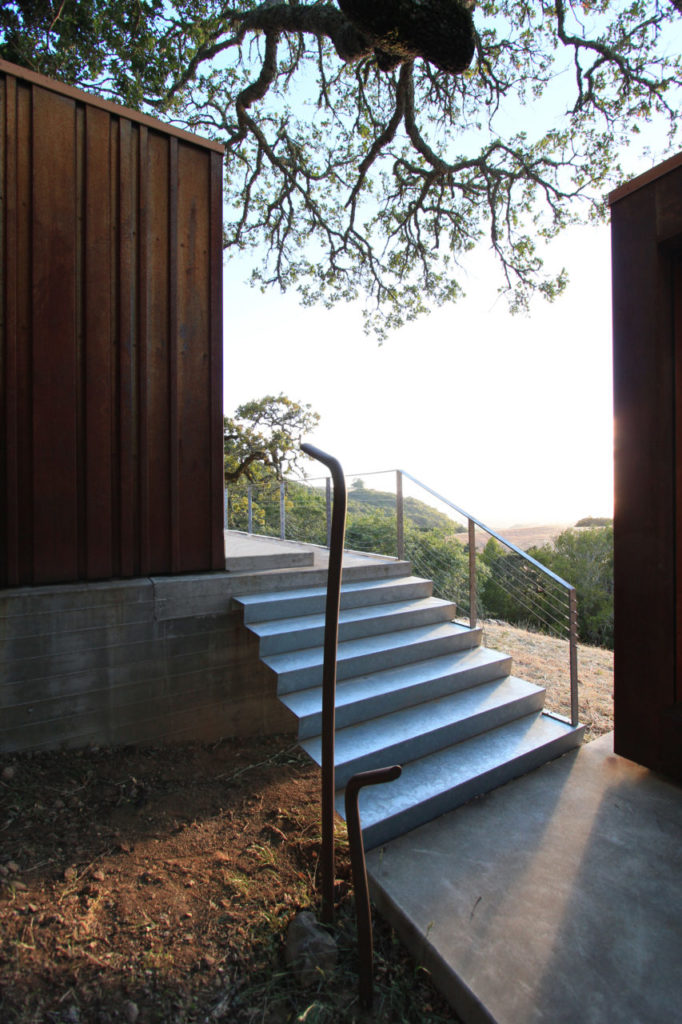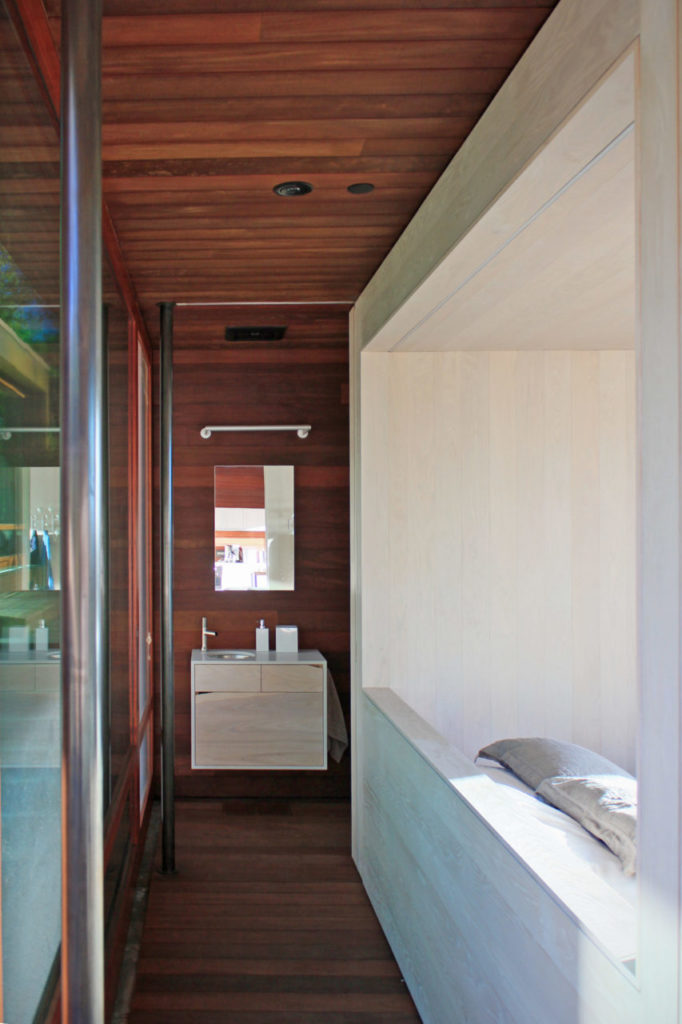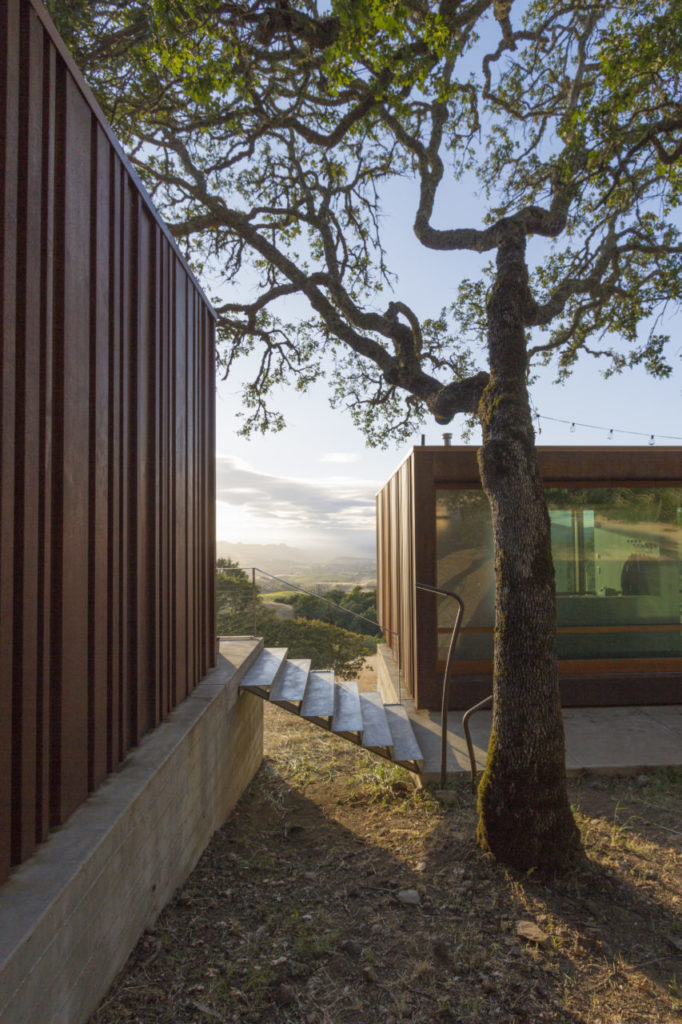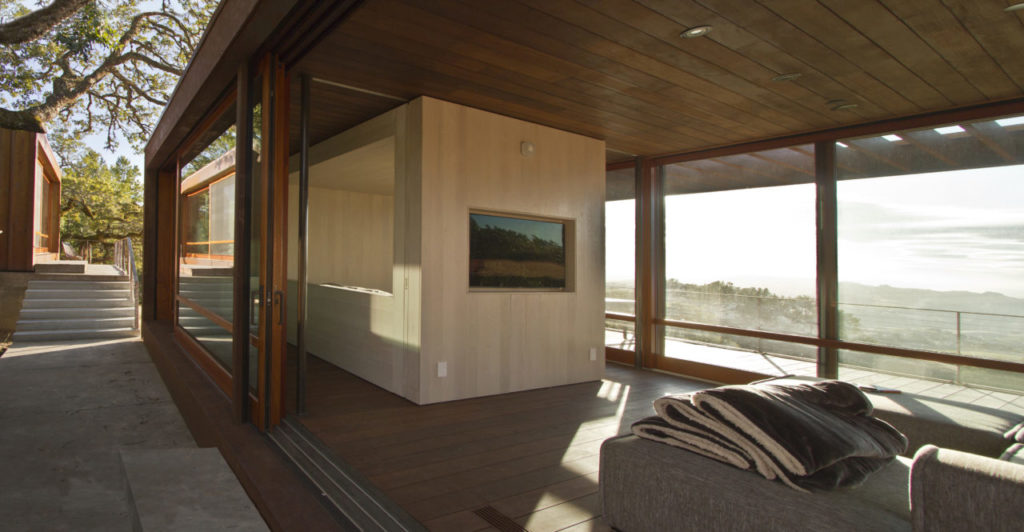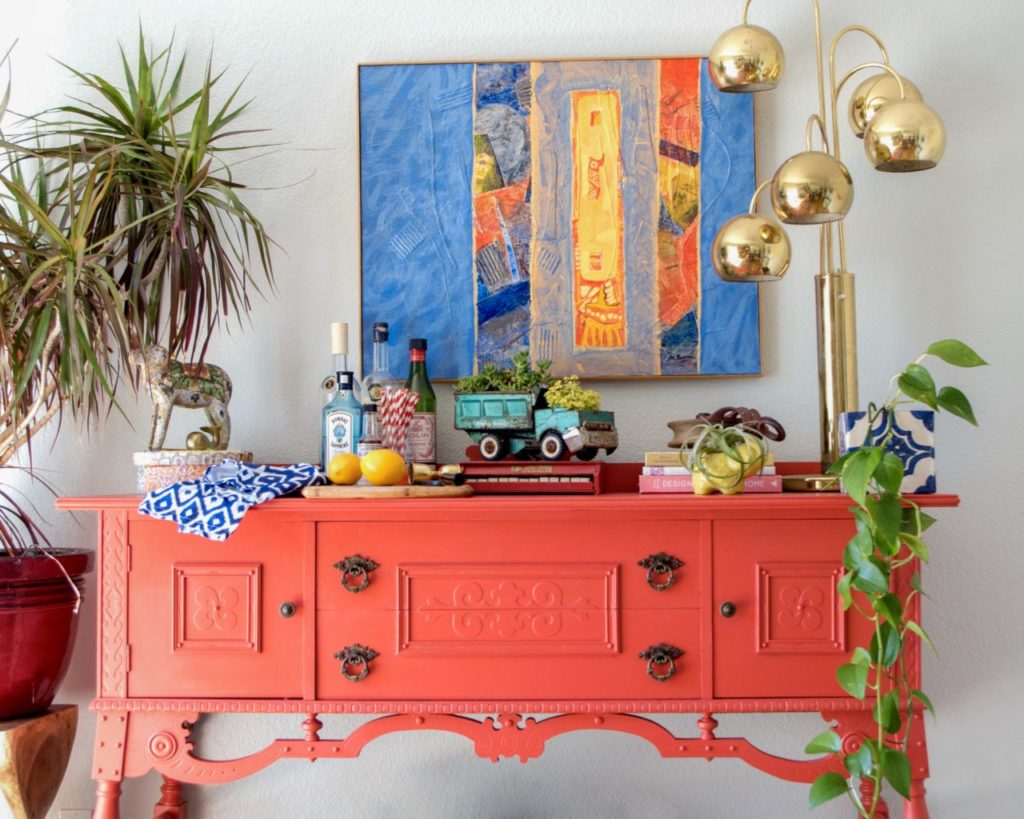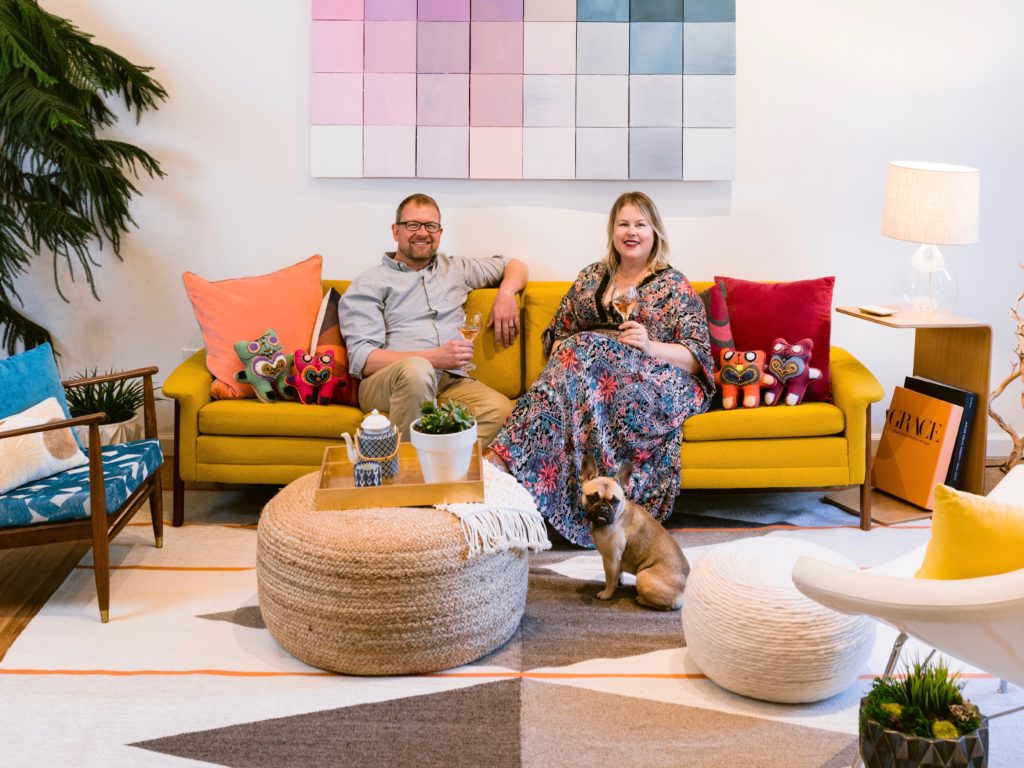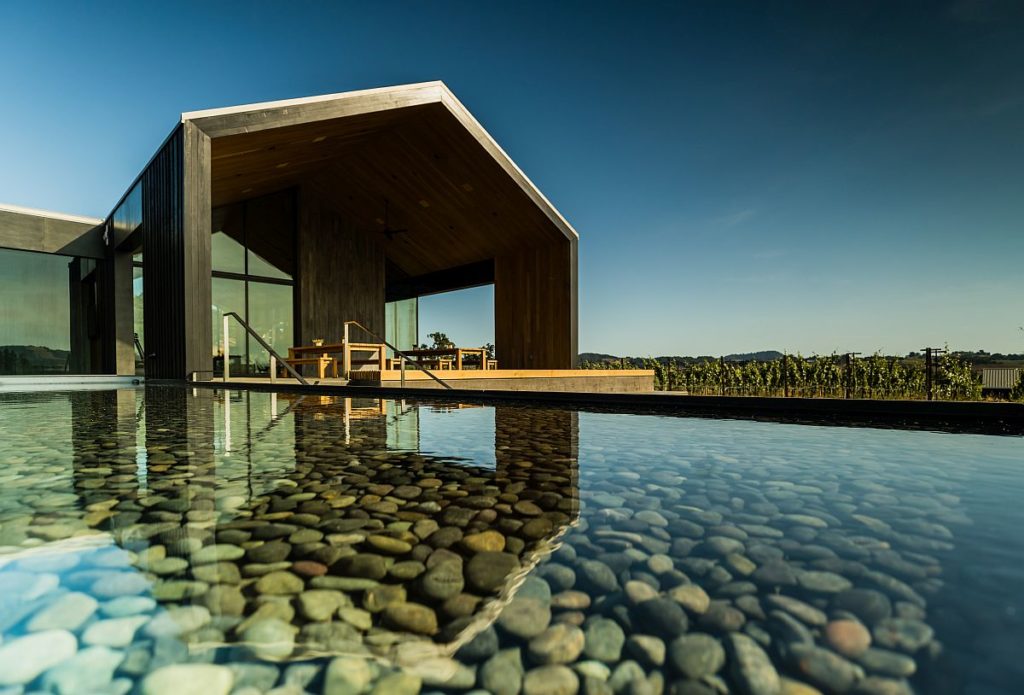Photography by Alchemy
A tiny house on Sonoma Mountain is getting big accolades from the design world, an achievement all the more surprising considering it was made in a factory.
The Sonoma weeHouse is just 640 square feet, the size of many rooms in some of the Wine Country’s awesome estates. But BJ Siegel, who had the little house built for his family as a rural getaway, understands that artistry comes in all sizes.
Siegel, who is the director of store design for Apple, wasn’t looking for opulence — just a little shelter with incredible views, which is, after all, what drew the San Francisco resident to the wilds of the mountain in the first place.
The corrugated Cor-Ten steel box with 9-foot sliding glass walls is set on a concrete plinth that cantilevers a deck 10 feet out into the oak-studded landscape. A matching, even more miniature, guesthouse, half the size at 330 square feet, is connected to the main house with a short walkway and stairs.
The ultra-minimalist home, designed in Minnesota by Alchemy Architects, built in an Oregon factory, and trucked to a mountain above Santa Rosa, has been featured by many design writers including Dwell Magazine. In June it was honored with a Small Project Award from the American Institute of Architects.
The awards, conferred on projects throughout the country, singled out another Sonoma County project — Sonoma Academy’s Janet Durgin Guild and Commons, for its sustainable design. Designed by WRNS Studio, with offices in San Francisco, the space incorporates maker/digital classrooms, and kitchen and dining areas on two sweeping floors with a living roof and tiered planters that filter storm and graywater, among numerous other green features.
Judges called the Sonoma weeHouse, “beautifully done,” with a “compact footprint and minimal site impact.”
Alchemy, which specializes in high-design modular buildings, describes Siegel’s mountain retreat as a “celebration of the luxury of less.”
“We did a lot of research to see what was out there. There are a lot of prefabricated systems and architects,” Siegel says. “I tried to find the simplest and most straightforward design I could find and then tried to find that person who was willing to collaborate and play around and let me be a part of it with him.”
He wound up with Geoffrey Warner, founder of Alchemy Architects. The Minnesota-based firm first attracted notice 15 years ago with its first weeHouse, designed and built for a violinist with the Minnesota Orchestra on a shoestring budget.
Warner says the woman put so much money into purchasing her Wisconsin property that she didn’t have much left to spend on a house. They settled on a tiny 350-square-foot jewel box with no bathroom that Alchemy built in a month and a half in their warehouse.
The minimalist modular structure proved appealing, coming at a time when a handful of other visionary architects, like the Bay Area’s Michelle Kaufmann, were being celebrated for creating elegant factory-built homes that challenged the public’s dim view of prefab buildings. It also came when the idea of eco-design and the “not-so-small house” was just entering the lexicon. Small prefab fit with the philosophy that “the greenest square foot is one you don’t build.”
Now, 15 years later, the design world is getting closer to a point where customized prefabricated homes will become commonplace as technology eases the process, Warner says. The improved economy means more venture capital going into factory-built construction, he observes. Alchemy has since delivered more than 40 weeHouses, including one in Ukiah.
For his weekend retreat, Siegel picked a 4-acre parcel far up Sonoma Mountain Road. It is part of Cooper’s Grove, a cluster of four parcels surrounded by 226 acres protected by the Sonoma County Agriculture and Open Space District.
“We stumbled on it on an internet listing,” he says. “We felt it was perfect because it was so close to our San Francisco home.”
Siegel worked with Warner to customize the basic weeHouse design to his own aesthetic and needs, including materials.
“There are only three materials in the house working inside and outside, and on the floors, and walls and ceiling,” Siegel says.
The outside is corten, a steel alloy meant to rust that becomes a protectant as well as a natural finish, Siegel says. The interior walls and ceilings and floors are ipe, a Brazilian hardwood.
The main house reflects an intriguing use of space. It features a whitewashed oak bed box in the middle that serves to set off a kitchen, dining, and living room on one side and a bathroom on the other.
“The logical thing when you have a longer box is to put a bedroom at one side and a bathroom at the other end. But moving this bed box into the middle and pushing out a very open shower and bath-toilet room on the end wall, we could really embrace the openness in a different way,” Warner says.





